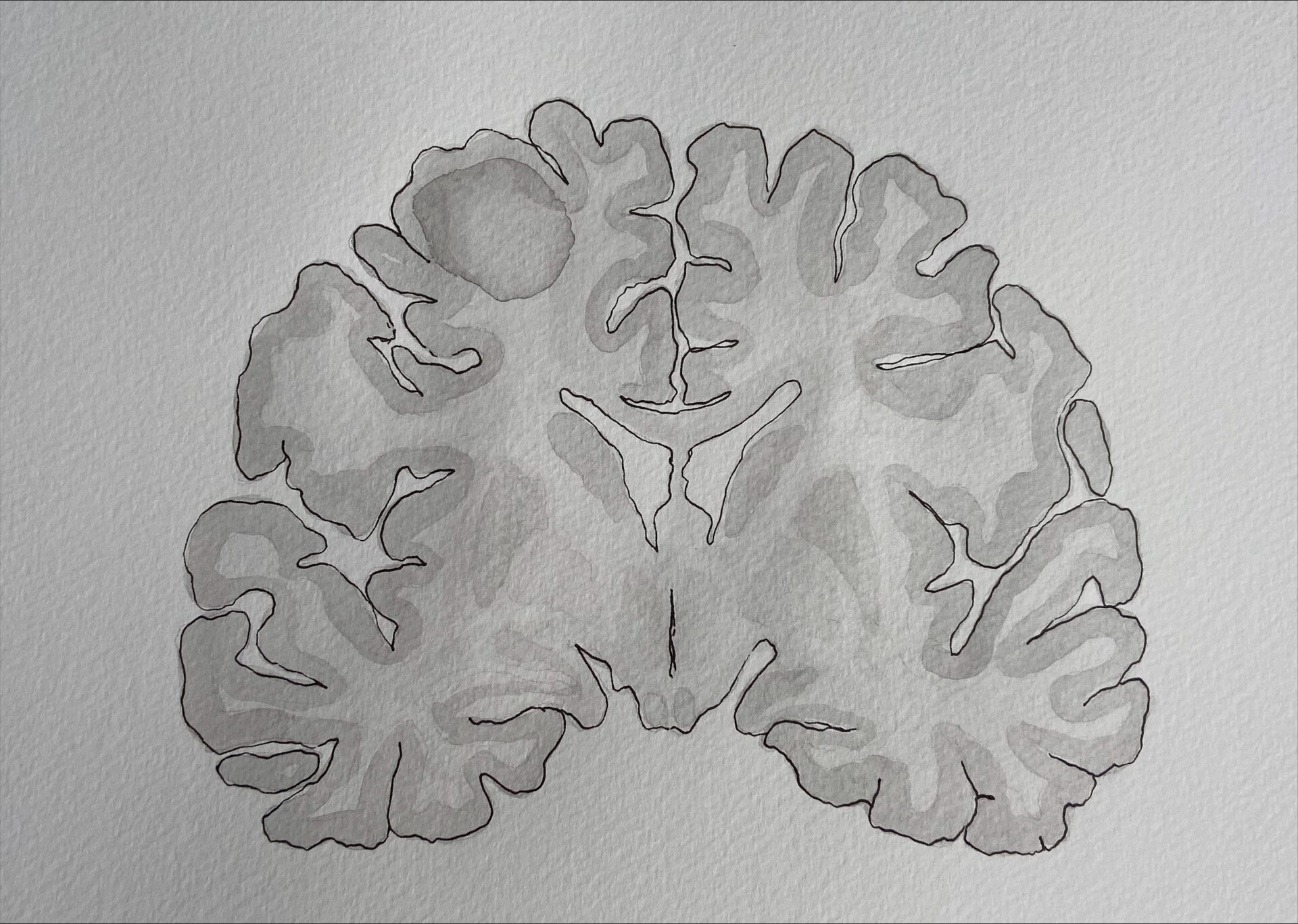Clinical Curiosity and Compassion
I chose to paint my art piece in black and white, both to represent the MRI that I saw, but also to highlight the black-and-white situation the patient was in. Whilst symptoms and signs can leave room for interpretation, other diagnoses, and perhaps hope, a clear MRI like my patient had does not. It is both literally and figuratively black and white.
I feel this encounter has taught me the importance of balancing my academic curiosity with empathy and compassion. It could become easy to start to be desensitized to the realities of patients’ lives when we approach them as mere learning opportunities. Patients are individuals with their own unique experiences, fears, and hopes, and we have a responsibility to be sensitive to this and provide them with compassionate care. This is something I discussed with the doctor at the time, who explained how at times a doctor’s role is not dissimilar to that of a detective, and it can be very satisfying when a diagnostic test like an MRI proves you right. You can go home thinking how clever you are and that you did such a good job, whereas the outcome for the patient might be much sadder, their whole life and future might have changed in that moment.
Whilst making this art piece I reflected on how I had felt seeing the MRI. I do think that maintaining an interest in learning about medicine is of great importance. As medical professionals, we must stay engaged and passionate about our work to provide the best possible care to our patients. Without that spark, we risk becoming burnt out and losing the motivation to provide excellent care.
My encounter with this patient has taught me the importance of balancing my excitement for learning with empathy and compassion for my patients. I am sure I won’t be alone in coming to this realisation, probably every medical professional has at some point, but I am grateful for the opportunity to have learned this lesson early on in my training and will strive to apply it throughout my career.
Comments
Add legacy comments here

This artwork really resonates with me. I’m a person who is also naturally curious and feels great satisfaction when I solve problems, learn new skills or find out about new aspects of medicine. The simplicity of the drawing is what caught my eye. I like the way that it depicts the simplistic exterior of the brain with the winding sulci and geometrical gyri. This contradicts the complexity of the brain, which is concealed by this beautiful façade. I believe this drawing is very analogous to the artists’ experience. It’s important to appreciate the complexity of both science and humans. Showing empathy and compassion towards patients is essential and should never be desensitized by our own curiosity and drive to succeed.
I really enjoyed this piece. To me, this drawing is a powerful metaphor for the journey that all medics embark on, where science and humanity intersect. It serves as a reminder that, as doctors, our primary duty is to remain compassionate and empathetic toward our patients, no matter how driven we are by curiosity and ambition. The pursuit of knowledge and mastery is important, but it must never overshadow the fundamental responsibility to see each patient as a whole person, with unique stories and emotions. Maintaining this balance is, in my view, the highest calling in medicine, and one that I aim to honour throughout my career.
I am intrigued by this artwork, as it portrays the intersection of science and humanity in medicine. The black and white MRI represents more than just a brain scan; it symbolises someone’s life, story, and reality. This piece is a powerful reminder that each scan we analyse, each diagnosis we make, is not just data, it can directly impact a person. As important passion and academic success are, medicine is defined by more than knowledge alone. Medicine requires compassion and empathy, a commitment to seeing patients as individuals themselves and not just cases; both knowledge and compassion are essential in sculpting us to become a good doctor.